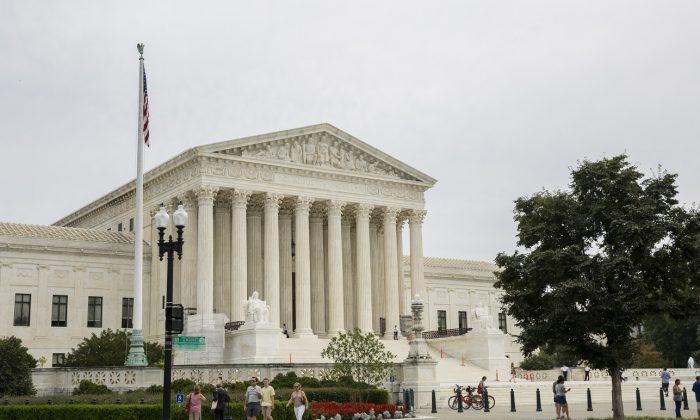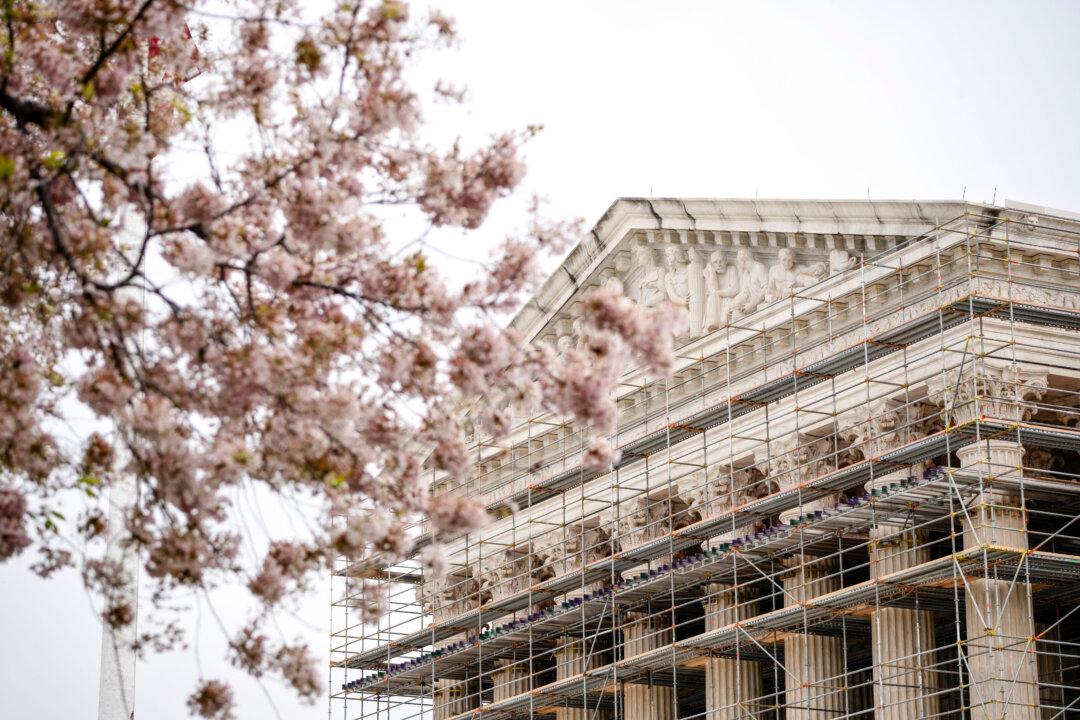WASHINGTON—The Supreme Court seemed inclined during oral arguments Nov. 6 in a dispute over wastewater disposal in Hawaii to reverse new powers to regulate pollution granted in a recent court decision, and also appeared open to reining in some of the regulatory stances of the Obama-era Environmental Protection Agency (EPA).
Recent court decisions have limited federal environmental law.
The Supreme Court previously reined in the Clean Air Act in Utility Air Regulatory Group v. EPA, because the EPA improperly expanded federal jurisdiction to “millions” of sources that formerly didn’t require permits under the statute.
Taking a cue from the Supreme Court, the 9th Circuit Court of Appeals in July vacated the conviction of Joseph D. Robertson, who languished in prison for a year and a half for digging fire protective ponds near his Montana home without federal permits. Federal regulators had claimed that Robertson interfered with “navigable water”—a small ditch with a trickle of water—when he dug the ponds and that his actions violated the Clean Water Act.
These decisions also weaken the power of the administrative state, and the Hawaii case is one of several pending before the Supreme Court that the justices could use as a vehicle to further tear away at the legal underpinnings of the modern administrative state.
Executive agencies are sometimes referred to as the “fourth branch” of the federal government in the United States; critics say officials in the administrative state are unaccountable to voters. Unelected bureaucrats are said to usurp the functions of the executive, legislative, and judicial branches, and critics say the agencies of the Obama administration, in particular, were prolific and bold in their regulatory overreach.
Congress, they say, is supposed to make the laws of the land, but lawmakers have steadily ceded that body’s constitutional powers to the administrative state, to the overall detriment of society.
In the case at hand, officials in Maui County, Hawaii, are appealing a novel Feb. 1, 2018, interpretation of the Clean Water Act by the 9th Circuit Court of Appeals that gave the EPA sweeping new powers to regulate pollution that travels through groundwater. Regulating pollution such as discharges from septic tanks has generally been left to state and local governments.
The 9th Circuit Court of Appeals sided with environmentalists who accused the county of violating the Clean Water Act by injecting wastewater underground, to eventually find its way into the ocean waters that surround the state. That court determined that the federal law applied to so-called point sources, meaning, “any discernible, confined and discrete conveyance” including pipes, ditches, channels, tunnels, conduits, and wells.
In oral arguments, county lawyer Elbert Lin and U.S. Deputy Solicitor General Malcolm Stewart argued that the polluted water in dispute came from a more spread-out territory, known in law as a nonpoint source, instead of from any specific point source. Nonpoint sources are usually regulated by the states.
“This case is not about whether the releases from Maui’s underground injection well should be regulated at all, but how,” Lin said in court.
“They are already regulated under several existing state and federal environmental programs, including the Clean Water Act’s nonpoint source program. But is a Clean Water Act point source permit also required? The question is where the line falls between the Clean Water Act’s federal point source program and its state law nonpoint source program.”
The justices seemed particularly skeptical of the arguments offered by David Henkin, a Honolulu-based staff attorney at Earthjustice, a left-wing public interest law firm that specializes in environmental cases. The firm represents Hawaii Wildlife Fund, Sierra Club-Maui Group, Surfrider Foundation, and West Maui Preservation Association in the legal proceeding.
Henkin argued the 9th Circuit ruling didn’t introduce novel legal principles.
“For three decades, EPA interpreted the Clean Water Act prohibition this [expansive] way. In all that time, the parade of horribles petitioner imagines never happened because applying the prohibition isn’t nearly as complicated as petitioner suggests.”
Although Justice Elena Kagan seemed sympathetic to the environmentalist position, Chief Justice John Roberts, along with Justices Samuel Alito and Stephen Breyer, peppered Henkin with questions about where the federal government’s power to regulate wastewater ends.
“What concerns me is whether there is any limiting principle that can be found in the text and is workable and does not lead to absurd results,” Alito said.
If the 9th Circuit decision stands, “every homeowner with a septic tank could be subject to harsh treatment from agency bureaucrats,” Damien Schiff of the Pacific Legal Foundation, which filed a friend-of-the-court brief in the case, said previously.
“Congress has never asked federal agencies to regulate all pollution everywhere in the country,” Schiff said, adding that the scope of the Clean Water Act “has been a contentious and controversial issue for decades.”





